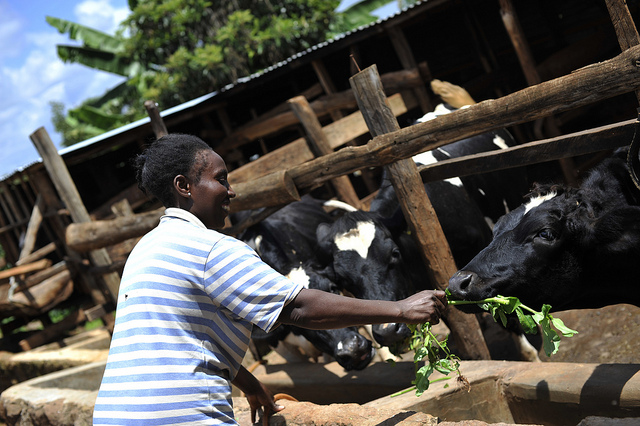Up to 2000 farmers in West Pokot County have increased their earnings from Sh55m to Sh215m in 2017 by adopting artificial insemination services, good feeding routines, access to extension services and organized marketing system through cooperatives.
Milk production has also increased from about 20,000 liters to 35,000 liters per day.
This came at time when Kenya’s milk production declined by 30 per cent in 2017 to 3.64bn liters compared to 2016 according to the Kenya Dairy Board.
According to the Board, Kenya’s 1.8m smallholder dairy farmers produce an average of seven to nine liters per cow a day, against a potential yield of 20 liters.
Related
Dairy farmers to earn over Sh4.5bn from KCC plant upgrade programme
Dairy, courgette farming earns farmers sh400, 000 monthly
Meru farmers expand market with barcoded dairy products
“For a long time, farmers in the region have experienced low milk production occasioned by poor feeding regimes due to insufficient fodder and pastures, frequent disease outbreaks, hawking of milk, inappropriate cattle breeds and inadequate artificial insemination services” said Samuel Maiyo an extension officer at the Kenya Agricultural Productivity Programe (KAPP).
“With support from KAPP, farmers have been able to develop workable agribusiness interventions to address the identified dairy production and marketing challenges”

The farmers were educated through barazas (public meetings) where interested farmers were enrolled as members of common interest groups to enable them increase their incomes through a series of well laid out interventions which included providing technical guidance with the aim of raising milk production from four to eight liters per cow per day. Farmers were also challenged to use existing cooperative societies to market their milk instead of hawking.
The farmers were trained on pasture management, feed formulation, pest and disease management, clean milk handling, group dynamics, record keeping, breed improvement, gender mainstreaming, environmental and social safeguards and business plan development.
At least 60 per cent of farmers who participated in the exercise have since established pastures and fodder crops such as Napier grass, Boma Rhodes grass, oats and lucaena species to supplement natural pastures.
More than one hundred farmers have also adopted zero-grazing as a production system. Incidences of disease infections and pest attacks have gone down through improved livestock husbandry practices like spraying and deworming.
With the creation of grant management structures and business plan development, farmers have been empowered and are able to manage their own resources. They are also able to keep their own records thus enabling them to determine whether they are making profits or not.
“Nowadays our wives no longer beg for assistance from us. This is because they can fend for
themselves through the sale of evening milk. They no longer hawk the milk. We are happy as they are also economically empowered,” says Charles Rumot, a dairy farmer in West Pokot.
These sentiments were confirmed by the West Pokot county dairy value chain chairman, Pius Lokita. “Our milk production has increased compared to the times before KAPP started working with us. Our farmers have started engaging in other developments like building better houses and buying better dairy cows”
















Comments powered by CComment